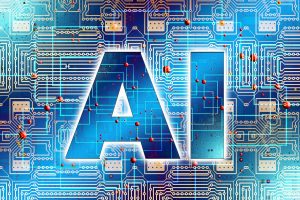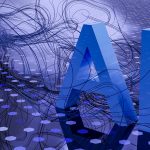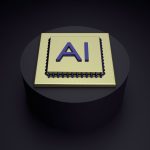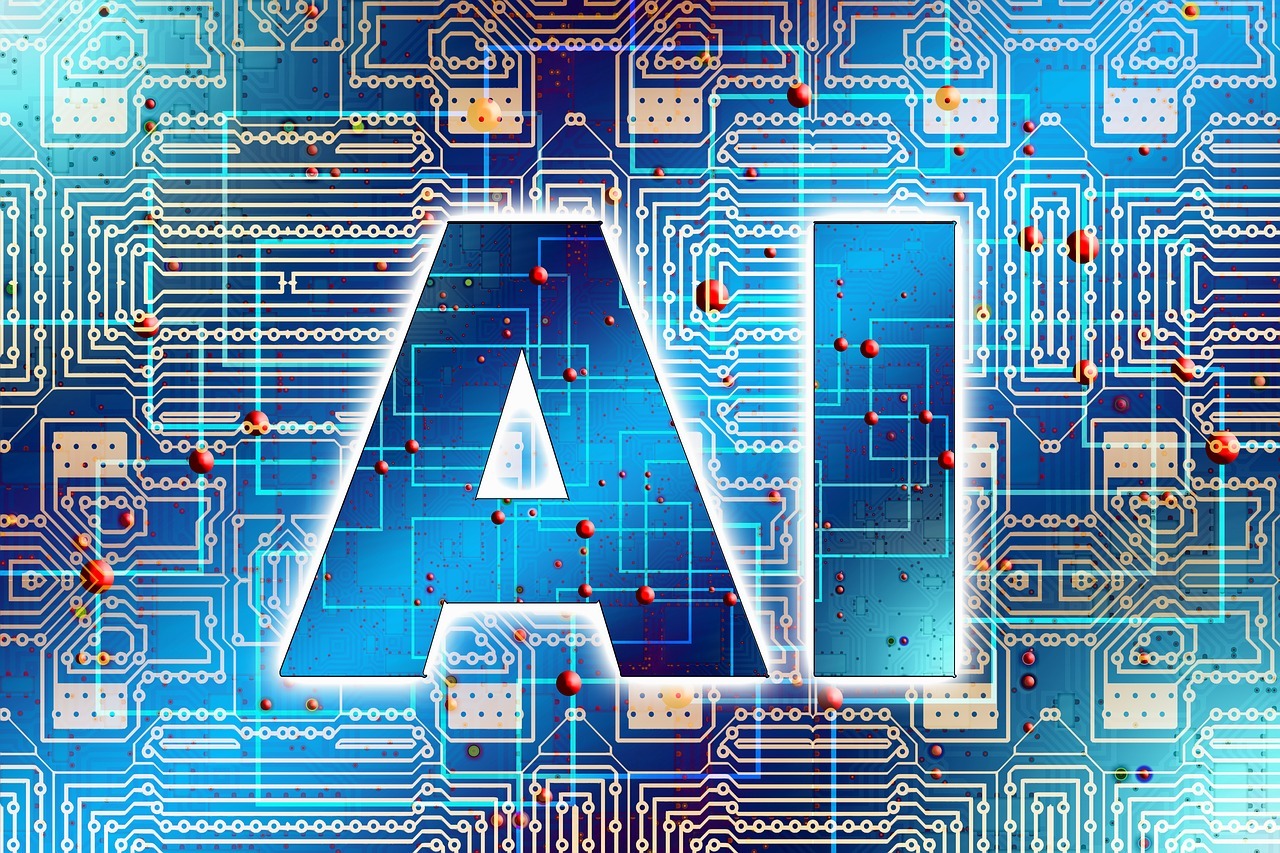-
How AI is Changing Website Design: 10 Ways AI Transforms Web Development
AI has revolutionized website design, transforming static web pages into dynamic, personalized experiences. Modern web designers use AI algorithms to create tailor-made designs for online experiences that capture attention and drive engagement.
AI-Driven Website Personalization
User Experience
AI is revolutionizing website design by personalizing the user experience, making it more tailored to individual preferences. This enhancement in web design improves website navigation for users, ensuring that designers and developers can easily find the information they are looking for. By utilizing AI-driven personalization, designers can improve accessibility for all users, creating a more inclusive online environment.
For example, when a user visits an e-commerce website and searches for specific products, AI algorithms can analyze their browsing history and provide personalized recommendations based on their interests and past interactions with the site. This not only enhances the overall user experience but also increases the likelihood of conversion as users are presented with relevant content.

Furthermore, AI-powered chatbots on websites can adapt to individual preferences and provide tailored assistance to each visitor based on their behavior patterns. For instance, if a user frequently seeks information about a particular topic or product category, the chatbot can proactively offer related resources or suggest relevant web pages.
Behavior Tracking
Incorporating AI into web design allows real-time tracking of user behavior across websites. These sophisticated algorithms identify patterns in how users interact with different elements of a website such as buttons, links, images, and forms. By analyzing modern web design data in real time, AI technology predicts potential actions that web designers may take next during their web development session.
If an e-learning platform observes that certain students consistently struggle with specific types of questions or topics within a course module through tracking mouse movements and clicks; then it could use this data to recommend additional study materials or tutorials specifically addressing those areas where students seem to need extra help.
Moreover, modern web design and intelligent user interfaces might track which sections readers spend most time on – such as sports news versus political updates – using this insight from behavior tracking to personalize content recommendations for each reader’s subsequent visit.
Content Adaptation
AI plays a pivotal role in adapting content according to individual user preferences by customizing it for different audience segments within websites. Whether visitors access sites via desktops or mobile devices – whether they prefer visual content over text-based material – artificial intelligence tailors experiences accordingly while optimizing layout formats according to varied screen sizes.
Enhanced User Interfaces
Visual Elements
AI is revolutionizing user interfaces by leveraging image recognition to enhance the visual appeal and design of websites. By utilizing AI, websites can generate personalized visual content tailored to individual users. This means that when a user visits a website, they may see images and graphics specifically chosen for them based on their design preferences or browsing history. AI plays a crucial role in optimizing visual elements for faster loading times in modern web design and web development. For instance, it can automatically compress images without compromising quality, ensuring that web pages load quickly and efficiently.
Moreover, AI’s ability to analyze user data enables it to create visually appealing content that resonates with the target audience and modern web design. This could include displaying product recommendations based on previous purchases or showing relevant imagery related to the user’s interests. By doing so, AI not only enhances the overall aesthetic design of websites but also contributes to a more personalized and engaging user experience.
Interactive Features
In addition to enhancing visual aspects, AI also transforms modern web design through interactive features that adapt based on user behavior. Chatbots and virtual assistants powered by AI technology are prime examples of how interactive elements are being personalized according to individual users’ needs and preferences. These smart assistants can provide real-time assistance, answer queries, and offer tailored recommendations.
Furthermore, these interactive design features contribute significantly to improving user engagement, as they create dynamic interactions between the website and its visitors. For example, an e-commerce website might use AI-powered chatbots to guide customers through their shopping journey by providing product suggestions or answering questions about specific items.

Automated SEO Strategies
Keyword Optimization
AI is revolutionizing website design by streamlining the process of keyword optimization. It can identify high-performing keywords that are most likely to attract traffic and improve search engine rankings. By analyzing search patterns and user behavior, AI tools can suggest relevant keywords that align with current trends, ensuring that websites stay competitive in the digital landscape. Moreover, AI helps to optimize website design and content for search engines by strategically placing these identified keywords throughout the site’s copy.
For example, a business website offering eco-friendly products might use AI-generated keyword suggestions like “sustainable living,” “environmentally friendly,” or “green lifestyle” to enhance its visibility among environmentally conscious consumers.
AI also generates keyword suggestions based on trends, allowing websites to adapt quickly to changing consumer interests and preferences. This means that businesses can continuously update their web content with fresh keywords without extensive manual research or guesswork.
Content Generation
In addition to enhancing SEO strategies, AI plays a crucial role in automating content generation for websites. By leveraging machine learning algorithms, AI technologies have the ability to create personalized web content at scale. This means that businesses can cater to individual user preferences more effectively through dynamic web experiences tailored specifically for each visitor.
For instance, an e-commerce web platform utilizing AI-powered content generation could automatically produce product descriptions customized according to a user’s browsing history and purchase behavior.
Moreover, as part of automated website design, AI assists in generating SEO-friendly content based on user intent. By understanding what users are looking for when they visit a website, artificial intelligence tools enable businesses to deliver highly relevant and engaging information seamlessly embedded with optimized keywords.
Predictive User Analytics
Artificial intelligence (AI) is revolutionizing website design through predictive user analytics. By analyzing website traffic patterns and sources, AI offers valuable insights into future traffic trends using machine learning. This enables businesses to optimize their web marketing strategies, tailoring them to the specific needs and behaviors of their audience.
Furthermore, AI plays a pivotal role in conversion prediction by forecasting user conversion likelihood. It identifies the various web factors that influence conversion rates and provides actionable recommendations to enhance these rates effectively. For instance, if an e-commerce website notices a surge in conversions during specific times of the day or week, AI can identify this pattern and suggest optimizing marketing efforts during those peak periods for maximum impact.
The utilization of AI in predicting user behavior on websites also allows businesses to understand which aspects of their websites are most effective at engaging visitors. Through machine learning algorithms, AI can analyze vast amounts of data from users’ interactions with a website to predict future actions accurately. For example, if an online retailer observes that web users who browse certain product categories are more likely to make a purchase after viewing related products or reading customer reviews, they can use this information to personalize the browsing experience for each visitor accordingly.
In addition to understanding current consumer behavior patterns on websites, predictive user analytics powered by AI empowers businesses with the ability to forecast potential future trends accurately. By leveraging historical data alongside real-time inputs from various touchpoints across digital platforms such as social media channels, email campaigns, and web, companies gain invaluable foresight into evolving consumer preferences and market dynamics.
Ultimately, integrating predictive user analytics into website design through artificial intelligence not only enhances overall user experience but also significantly impacts business performance by driving higher engagement levels and increasing conversion rates.
AI in Responsive Design
Layout Adjustments
AI plays a crucial role in modern web design by dynamically adjusting website layouts based on user preferences. Whether it’s the screen size or resolution, AI applications optimize the layout to ensure an enhanced user experience. For instance, if a web user prefers larger text or specific elements to be more prominent, AI can personalize these aspects for that particular user. This level of personalization enhances engagement and satisfaction.
Moreover, AI ensures that websites are accessible and functional across various devices. It optimizes the performance of websites for different devices and browsers, ensuring a seamless experience regardless of how users access the site. For example, when someone visits a website from their smartphone, AI adapts the design to fit smaller screens without compromising functionality or aesthetics. This adaptability is essential in today’s digital web landscape where users expect consistent experiences across all their devices.
Device Compatibility
One significant advantage of integrating AI into website design is its ability to guarantee device compatibility. With the prevalence of smartphones and tablets as primary browsing tools, it’s crucial for websites to be responsive on these platforms. Thanks to AI-driven technologies, websites can automatically adjust their designs based on the device being used. As a result, users don’t have to struggle with zooming in or out just to navigate through content.
Furthermore, this adaptability extends beyond mobile responsiveness; it also encompasses various types of devices such as smartwatches and voice-activated assistants like Amazon Echo or Google Home. By leveraging AI capabilities within web design processes, developers can create interfaces that seamlessly integrate with these diverse technologies while maintaining optimal functionality.

Chatbots and Customer Support
AI has revolutionized customer service through the implementation of chatbots on web. These digital assistants provide instant support to users, significantly enhancing their experience on websites. When web visitors have questions or encounter issues, chatbots offer real-time assistance, ensuring that their queries are addressed promptly. This immediate web response capability not only improves user satisfaction but also increases the likelihood of converting visitors into customers.
Moreover, AI-powered chatbots utilize natural language processing to understand and resolve user inquiries effectively. By analyzing the context and semantics of questions on the web, these bots can provide accurate and relevant answers to users’ queries. As a result, customer satisfaction is enhanced as they receive efficient web query resolution without having to wait for human intervention.
The integration of chatbots in website design allows businesses to deliver superior customer support without increasing operational costs.
Streamlining Development Process
Code Generation
AI is revolutionizing development processes by automating code generation for website design updates. It assists in creating clean and efficient code structures, helping developers streamline the coding process. For example, AI tools like Adobe’s Sensei and Wix ADI analyze user input to automatically generate a customized website layout, saving developers significant time and effort.
Furthermore, these AI-powered systems can identify patterns in existing websites to suggest improvements or create entirely new designs based on the collected data. This not only expedites the web development process but also enhances the overall quality of the end product.
Testing Automation
In addition to code generation, AI plays a pivotal role in automating design processes by streamlining testing procedures. By leveraging machine learning algorithms, AI can detect and report bugs and issues in real-time during website testing. This automation saves time by conducting comprehensive web tests that would otherwise require extensive manual effort from developers.
Moreover, with advanced AI-enabled testing tools such as TestCraft and Applitools, companies can ensure that their websites are thoroughly tested across various devices and browsers without investing excessive human resources into this aspect of development.
Content Creation with AI Tools
Text Generation
AI is revolutionizing website design by automatically generating relevant and engaging text content. It analyzes user data from the web to create personalized messaging, enhancing user experience. AI aids in efficiently producing SEO-friendly written content, ensuring websites rank higher on search engine result pages.
For instance, an e-commerce website can utilize AI to generate product descriptions based on customer preferences and behaviors. This not only saves time but also ensures that the web content resonates with the target audience, leading to increased sales and customer satisfaction.
Furthermore, AI-powered chatbots use natural language processing to provide instant responses to user queries on the web, improving customer engagement and retention rates. These chatbots are capable of understanding complex inquiries and delivering accurate information promptly.
AI’s ability to automate image production processes significantly impacts website design. By tailoring images based on user preferences and behaviors, it enhances visual appeal while optimizing loading times for a seamless web browsing experience.
Moreover, through machine learning algorithms, AI can analyze vast amounts of data to understand which visuals resonate most with users. Consequently, websites can deliver customized visuals that align with individual preferences.
AI for Website Accessibility
Compliance Standards
AI is revolutionizing website design by ensuring compliance with industry standards and regulations. It automatically monitors and enforces data privacy and security standards, making it easier for businesses to adhere to legal requirements without manual intervention. For instance, AI can help websites comply with the General Data Protection Regulation (GDPR) by continuously scanning for potential breaches and ensuring that user data is handled in accordance with the law.
AI plays a crucial role in maintaining regulatory compliance across digital platforms. By leveraging machine learning algorithms, businesses can stay updated on evolving regulations and swiftly implement necessary changes to their website design to remain compliant. This proactive approach not only reduces the risk of non-compliance penalties but also fosters trust among users who value privacy and security.
Adaptive Content
One of the remarkable ways AI is transforming website design is through adaptive content delivery based on real-time user interactions. By analyzing user behavior patterns, AI can dynamically personalize content according to individual preferences, creating a more engaging experience for visitors. For example, an e-commerce website equipped with AI capabilities can showcase personalized product recommendations based on a visitor’s browsing history or purchase habits.
Moreover, adaptive content allows websites to tailor messaging based on factors such as location, device type, or time of day. This level of personalization enhances user engagement and satisfaction while increasing the likelihood of conversions. As a result, businesses can significantly improve their online presence by delivering relevant and captivating content that resonates with each visitor’s unique interests.
Monitoring Website Performance
Real-time Analytics
AI is revolutionizing website performance through real-time analytics. With continuously updated data analysis tools, AI provides actionable insights instantly. This allows website owners to monitor user behavior and track websites’ performance metrics in real time.
By harnessing AI-powered analytics, website owners can gain valuable insights into user engagement, traffic patterns, and content performance. For example, AI algorithms can detect sudden changes in user interaction with a website, alerting the site owner to potential issues or opportunities for improvement. This real-time monitoring enables swift adjustments to be made to enhance the overall website performance and user experience.
User Feedback Analysis
AI plays a pivotal role in analyzing user feedback from various sources to improve websites effectively. By automatically detecting patterns and sentiments within feedback data, AI helps identify trends and preferences among users. AI-driven sentiment analysis enables website owners to understand the emotional tone of user feedback, allowing them to address concerns proactively.
For instance, if an e-commerce site receives negative feedback about its checkout process being cumbersome or confusing, AI-powered sentiment analysis can quickly pinpoint this issue. Consequently, the site owner can make targeted improvements based on these insights to streamline the checkout process for a more seamless customer experience.
Closing Thoughts
You’ve just scratched the surface of how AI is revolutionizing website design. From personalized user experiences to streamlined development processes, AI is reshaping the digital landscape. Embracing AI in website design isn’t just a trend; it’s a necessity in staying ahead in the digital race. So, whether you’re a designer, developer, or business owner, integrating AI into your website strategy is crucial for delivering exceptional user experiences and driving business growth.
Now it’s your turn to dive deeper into the world of AI-powered website design. Explore how you can leverage AI to create more personalized and engaging websites that resonate with your audience. Keep an eye on the latest advancements in AI technology and be ready to adapt and innovate. The future of website design is here, and AI is at the forefront—don’t get left behind.
Frequently Asked Questions
How does AI impact website personalization?
AI enables website personalization by analyzing user behavior and preferences to deliver tailored content, products, and recommendations. This enhances user experience, engagement, and conversion rates.
What are the benefits of using AI for automated SEO strategies?
AI-driven automated SEO strategies can improve keyword targeting, content optimization, link building, and performance tracking. This leads to enhanced search engine rankings and increased organic traffic.
How does AI contribute to responsive design?
AI helps in creating responsive designs by analyzing user interactions across devices and adjusting layouts accordingly. This ensures a seamless experience for users on various screen sizes.
Can AI be used for content creation on websites?
Yes, AI tools can generate content such as product descriptions, blog posts, or news articles based on specific guidelines. However, human oversight is crucial to ensure quality and relevance.
How does AI enhance website accessibility?
AI technologies can analyze web content to make it more accessible for users with disabilities through features like text-to-speech capabilities or alternative text suggestions for images.

